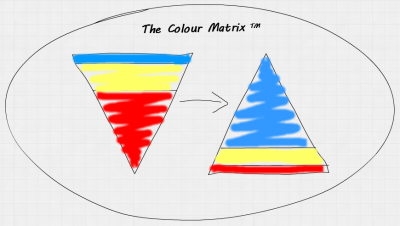
The 4 Simple Steps to Super Productivity
Have you ever got to the end of a busy day and wondered why you have achieved nothing?
This is exactly what a client of mine used to say to me all the time. His name is Dean, he owns a successful financial services company with revenue in excess of $3 million, very healthy profit margins and a team of about 15 full time employees.
Building a successful business has always been Dean’s dream. He wanted the fancy office, the personal assistants, the nice car and the lifestyle that goes with being a successful business owner. The only problem is that he didn’t think that the lifestyle would lead him to be feeling trapped, working 80-100 hours per week and chasing his tail while trying to stay on top of an ever growing work load.
Once I began working with Dean, the first thing we did together after our initial strategy session, was to commence with a framework designed to give him his time back, stop putting out fires and focus on tasks that were strategically important for the business in the mid to long term.
The Colour Matrix

This is extremely effective when done correctly, and we only need to cover 2 quick concepts for it all to fit together.
The first concept is actually a number – 1440 – and it’s important because it is the total number of minutes available to us in a 24 hour period.
The second concept is called, “Be the head, not the hands.”
Basically, there are 3 types of tasks that can be done in business.
- Strategic tasks that drive the business forward, usually called “on” the business tasks – the head.
- Implementation tasks or day to day tasks, usually called “in” the business tasks – the hands.
- Interruptions and time wasters, these are anything that are not planned for or do not fit the above – the interruptions/waste.
If you want your business to grow, you need to spend the majority of your time being the “Head,” minimise how much time you spend being the “Hands,” and eliminate all time wasting items.
The idea with this is to think of your time in chunks of minutes. You have a finite number of minutes each day and every time you do something, you are choosing to spend a percentage of those minutes on that item.
Most people don’t realise how few minutes they actually have available in a given day. You see, while 1440 may sound like a lot initially, you need to remember that about 60% of your time is already not being used for work related items.
Studies indicate that on average, people spend 16 hours per day doing things like sleeping, eating, travelling to work and back, family commitments, personal hygiene, television, reading etc.
Your mileage may vary, but on average this leaves us with only 480 minutes for work related items in a typical day.
Furthermore, research has shown that it takes us on average 15 minutes to focus and be productive on a task. Every time we get interrupted, it can take another 15 minutes to get refocused and back in the “zone.”
So looking at this practically, if a member of your team comes to you with a question and you spend 15 minutes with them you have just given them 15 of your 480 minutes for the day. Doesn’t sound like a lot, it’s about 3% of your time for that day. But, now you will be spending another 15 minutes just getting refocused again. You only have about 30 or so 15 minute blocks in your normal day, so “quick” interruptions really start to eat up your minutes.
This is why one of the first things I do with clients is schedule time to respond to emails and ban unscheduled “got a minute meetings” that their team want to have with them throughout the day.
Here’s how this model works step by step:
Step 1: Basic Time Audit
I got Dean to do a basic time audit on himself. Every half an hour, he would write down in 3 words or less what he had spent the previous 30 minutes doing in his diary. He did this for 2 weeks.
Step 2: Colour Coding
We then categorised and colour coded each activity or task:
Blue = Being the Head
Yellow = Being the Hands
Red = Time Wasters and Interruptions
Step 3: Flip the Triangle
Now that we had a categorised list of the majority of Dean’s activities and tasks, we started by eliminating the red ones, then reducing the yellow ones by reassigning those tasks to other team members and scheduling time in his day (everyday) for blue ones.
Step 4: Scale
We then did the same exercise with his entire team.
What Happened?
In the 3 months that Dean has been diligently working through this framework here’s what happened:
- Reduced his red category items (emails, unscheduled meetings, client problems that others could deal with, phone calls etc.) from 85% of his day (~ 7 hours) to roughly 5% (~25 minutes).
- He estimates that productivity based on output across his team has improved by 40 – 60%
- Due to this increase, he was able to reassign the vast majority of his yellow category work load to senior team members.
- Dean now spends on average, 70% of his time in the blue category being the Head. Or as he likes to say, “I am the Architect, not the Builder”.
- His entrepreneurial flair is back. Now that he has time to think and be creative, he recently added one of the most successful divisions to his company, helping businesses get funding from the government.
Lessons from Dean
So, what can you learn from Dean’s experience?
- Realise that being constantly busy in the red and yellow categories is not a badge of honour or an indication of your value or worth. It is a trap that leads you to being stuck and burnt out.
- Do regular time audits on yourself and the team. You will be surprised by the results. Just keep it fun and casual, no one appreciates it when they have someone looking over their shoulder all day.
- Divide your tasks and activities into categories to make it easier to determine how productive you are being.
- Think of everything you do in a given day as chunks of time. If you only have 480 minutes in any given day and a task pops up that will take 90 minutes to do, it makes it much easier to ask yourself, “does this justify using nearly 20% of my time today?”
- Delegate, automate or eliminate activities and tasks that suck up your minutes.
- Cut out distractions. Every time they happen, it takes you 15 minutes to get back in the zone.
- Have someone hold you accountable – it’s easy to fall into bad habits.
Want to see if you can achieve similar results or find out more?
Visit boomingbusiness.com
